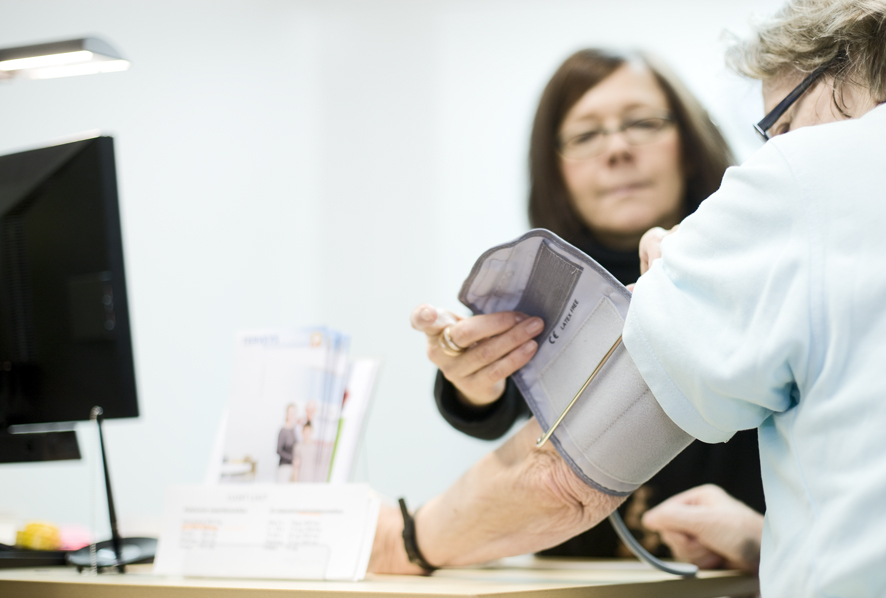The two-year health kiosk research and pilot project involving cooperation between the City of Lahti, Sitra and the University of Tampere is drawing to a close. Although the project is ending, health kiosk activities will be continued and developed further in Lahti. The aim is to utilise the positive experiences gained in the project. To this end, plans to introduce the low-threshold model to other areas within the social and healthcare services are underway.
“Customer satisfaction, the high number of visitors, the benefits of the preventive work and the low cost structure provide a good starting point for developing health kiosk services as well as deploying the low-threshold concept more widely within the social and healthcare services. We are planning to propagate the health kiosk model in the municipal field,” says Director Antti Kivelä from Sitra. “The health kiosk pilot was intended to improve the customer orientation of the primary healthcare structures, to reach groups at risk at an earlier stage and to improve the cost-efficiency of the operations. These aims are now close to being achieved.”
The final evaluation prepared by the University of Tampere sums up the key results for the Lahti health kiosk project. The evaluation regards the functionality and impact of the health kiosk as an innovative low-threshold model and discusses ideas for its further development.
Easier access to services
One of the most important objectives of the Lahti health kiosk project was to relieve the pressure of the accumulated demand for health services and improve service availability by opening a low-threshold health kiosk in the Trio shopping centre. The targeted number of visits was 9,000 per year, and this target was exceeded significantly. The over 22,000 visits made to the health kiosk represent 16 per cent of all visits to nurse practitioners at the health centres in Lahti. At the same time, the number of visits to nurse practitioners has decreased at health centres and hospital emergency facilities.
According to the final evaluation, the main achievements of the project include engaging patients as well as partners through thematic events. The number of visits shows that the heath kiosk has been able to successfully target its services to customers and that the customers are able to utilise the services offered.
Preventive care and service guidance
The health kiosk has introduced new forms of preventive care services in the form of thematic events, health education and individual health advice. Service guidance, a way of improving the customer’s access to information on the different services available, is an important function of the Lahti health kiosk. The low-threshold approach offers customers rapid and flexible access to services, and if necessary, they will be referred to the appropriate point of care. At the same time, awareness of service availability may also help customers avoid seeking inappropriate health services.
“Optimally, the health kiosk could support outpatient services by assessing the need for care and coordinating the care. This way, the health kiosk could conceivably reduce the need for more intensive services,” says Professor Jarmo Vakkuri from the University of Tampere.
High customer satisfaction
The health kiosk approach is based on the expectation that preventive action and early intervention will bring health benefits as well as reduce the number of visits to the doctor in the future. According to the final evaluation report, the price/quality ratio seems to be good, as costs have been modest, the number of visits high and the customers have been happy with the service. The cost has been low as the health kiosk is staffed by nurse practitioners, the services offered consist of a limited range of preventive services, and no appointments are needed.
Services targeted and developed
The City of Lahti opened a second health kiosk in the Prisma hypermarket in Laune. While the kiosk is open to everyone, services are particularly targeted at families with children, teenagers and young adults under 25 years of age. After the pilot, the health kiosk nurses now also prepare reports for employers for the purpose of arranging home care for sick children under 10 years of age. Piloting of physician’s consultations by remote means is also being planned.
Help for customers through low-threshold services
“In the future, the best elements of the health kiosk – rapid access to care, preventive consultation and service guidance on appropriate further care – could also be utilised in other local services, such as child welfare clinics or school healthcare services and services for the elderly,” says Risto Raivio, Director of Health Services for the City of Lahti. “Low-threshold services provided by a psychiatric nurse could also be tailored to intoxicant abuse and mental health rehabilitees. The perspective of service guidance also highlights the need for social services to ensure access to further care and assistance whenever needed. In this, service points such as health kiosks where a care professional quickly assesses the need for care and helps the customer with the next steps could play a key role,” Raivio concludes.
For further information, please contact:
Antti Kivelä, Executive Director, tel. +358 40 482 7435
Jarmo Vakkuri, Professor of Local Government Accounting and Finance, School of Management at the University of Tampere, tel. +358 3 3551 6356, +358 40 516 2479
Anna-Aurora Kork, researcher, University of Tampere, tel. +358 3 3551 6198
Risto Raivio, Director of Health Services, tel. +358 50 559 7866
Helena Launiemi, health kiosk manager, City of Lahti, tel. +358 44-7161139
www.sitra.fi/terveyskioski
Publication information
Low-threshold nurse practitioner consultation:
primary health care services in a shopping centre
Final evaluation of the Lahti health kiosk project (in Finnish)
Sitran selvityksiä 66, Helsinki 2012
ISBN 978-951-563-832-8 (paperback)
ISSN 1796-7104 (paperback)
ISBN 978-951-563-833-5 (URL:https://www.sitra.fi)
ISSN 1796-7112 (URL:https://www.sitra.fi)
